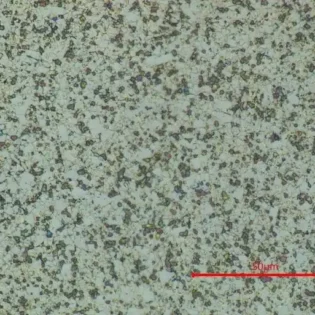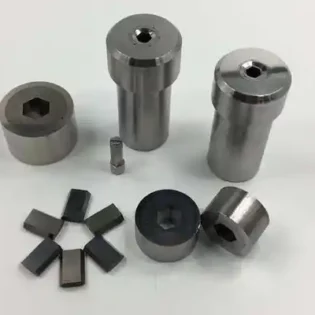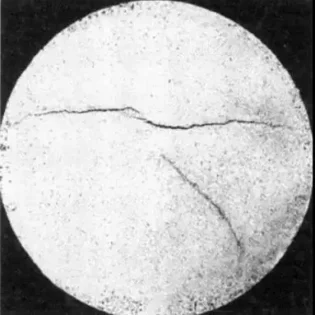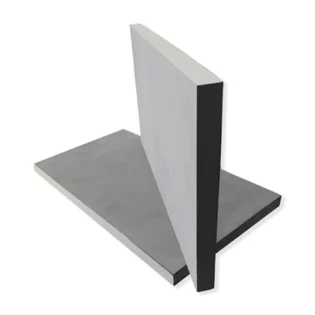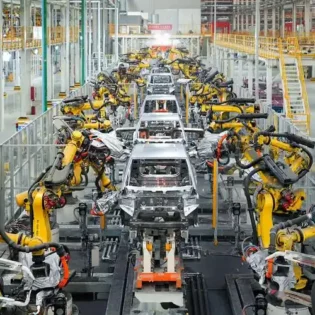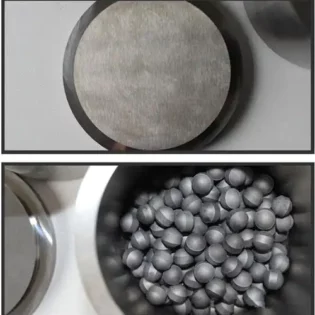Currently, PM is widely used in the production of hard alloys, porous materials, refractory metals, magnetic materials, and metal ceramics.

The History of Powder Metallurgy
The development of PM can be divided into three stages:
In the early 20th century, the production of tungsten filaments for electric lamps using PM processes was considered a milestone in the development of modern powder metallurgy technology. Subsequently, many refractory metals such as tungsten, tantalum, niobium, etc., could be prepared using PM methods.
The birth of powder metallurgy hard alloys in 1923 was also regarded as a revolution in the mechanical processing industry. In the 1930s, the PM process successfully produced copper-based porous oil-impregnated bearings.
The development then extended to iron-based mechanical parts, which were rapidly applied in various modern manufacturing fields such as automotive, textile, and office equipment. In the mid-20th century, powder metallurgy technology began to integrate with disciplines such as chemistry, materials, and machinery, leading to the development of higher-performance new materials and processes, further promoting the advancement of powder metallurgy.
This integration also resulted in the widespread application of PM technology in fields such as automotive, aerospace, defense industry, energy conservation, and environmental protection.
Basic Process of Powder Metallurgy
(1)Preparation of powder
Currently, powder production methods can be broadly classified into two categories: mechanical methods and physicochemical methods.
Mechanical methods involve mechanically crushing the raw materials, with minimal changes in chemical composition.
Physicochemical methods, on the other hand, utilize chemical or physical actions to alter the chemical composition or aggregation state of the raw materials to obtain powders.
The most widely used powder production methods in industrial applications are atomization, reduction, and electrolysis methods. Deposition methods (gas phase or liquid phase) are also important in specific applications.
(2)Powder forming.
Forming is the process of compacting metal powders into a solid block with a certain shape, size, porosity, and strength. Forming can be classified into two categories: conventional compaction and special forming.
Conventional compaction involves placing metal powders or mixtures into a steel mold and applying pressure to the powders using punches. After pressure is released, the compacted part is ejected from the mold.
Special forming methods have emerged as various industrial sectors and scientific technologies have advanced, demanding higher requirements for the properties, dimensions, and shapes of PM materials and products.
Currently, special forming methods include isostatic pressing, continuous forming, injection molding, high-energy forming, and more.
(3)Block sintering
Sintering is the phenomenon or process that occurs when powders or powder compacts are heated under appropriate temperature and atmospheric conditions. Sintering can be divided into monophase sintering and multiphase solid-state sintering.
In monophase sintering, the sintering temperature is lower than the melting point of the metal or alloy used. In multiphase solid-state sintering, the sintering temperature generally falls between the melting points of the low-melting component and the high-melting component.
In addition to conventional sintering, there are also special sintering methods such as activated sintering and hot pressing sintering.
(4)Post processing of products
Depending on the specific performance requirements of the product, additional processing treatments are commonly applied to sintered parts. These treatments include oil impregnation, precision finishing, thread cutting, heat treatment, electroplating, and more.
3pros and cons of powder metallurgy
Advantages of powder metallurgy:
- Sintering in powder metallurgy is conducted at temperatures below the melting point of the base metal. Therefore, most refractory metals and their compounds can only be manufactured using PM methods.
- The inherent porosity of powder metallurgy products allows for the preparation of porous materials, bearings, friction materials, etc., by controlling the product density and porosity.
- Powder metallurgy products can achieve dimensions very close to the final finished size, eliminating the need for extensive machining or requiring minimal machining.
- High material utilization in PM leads to significant metal savings and reduced production costs.
- Powder metallurgy products are manufactured using the same mold, ensuring good consistency between workpieces, making it suitable for mass production of parts, especially for products with high machining costs such as gears.
- PM allows for accurate and uniform material composition by controlling the powder blend. Additionally, sintering is typically conducted in a vacuum or reducing atmosphere, minimizing material contamination or oxidation and enabling the production of high-purity materials.
Limitations of powder metallurgy:
- Some properties of powder metallurgy components may not be as good as those of forged or certain cast parts, such as ductility and impact resistance.
- While the dimensional accuracy of PM products is good, it may not be as precise as that achieved by some precision machining processes.
- The inherent porosity of powder metallurgy parts can affect subsequent processing treatments, particularly in processes like heat treatment and electroplating, where the influence of this characteristic must be considered.
- The cost of PM molds is high, making it generally unsuitable for small-batch production of products.
Trends in the domestic powder metallurgy industry
With the rapid development of industrialization in China, the demand for high-value-added components is expected to accelerate. Additionally, the formation of global supply chains through globalization presents clear business opportunities for domestic component manufacturers. Therefore, to seize the current opportunities, the powder metallurgy industry should focus on the following four aspects of development:
(1)Iron based powder metallurgy products
Currently, the density of iron-based PM components is around 7.0-7.2 g/cm3. However, a domestic company has achieved a density of 7.6 g/cm3 for iron-based powder metallurgy components by combining traditional powder sintering and forging processes with technological improvements. At this density level, iron-based powder metallurgy can replace most fasteners and some functional components in industries such as machinery and automotive.
Considering the inherent material-saving and high-efficiency characteristics of PMprocesses, the potential value space for such iron-based powder metallurgy components can reach hundreds of billions of yuan.
(2)High precision powder metallurgy products
It serves the industrial structural upgrading of industries such as mechanical manufacturing, aerospace, automotive, and household appliances. This direction is primarily aimed at reducing mechanical weight, energy consumption, and achieving equipment miniaturization and popularization.
For example, the use of injection molded parts eliminates the need for further machining, reducing material consumption, and achieving almost 100% material utilization.
(3)Lightweight and functionalized alloys
In iron-based powders, the addition of alloy powders such as aluminum, magnesium, and rare earth elements enables the achievement of properties such as ultra-thinness and lightweight. This opens up wide-ranging applications in fields closely related to daily life, such as electronic devices and wearable technology.
(4)Electromagnetic alloy
Taking grain-oriented silicon steel as an example, the conductivity principle of silicon steel involves the addition of silicon, which reduces iron losses by decreasing the grain boundaries. In particular, grain-oriented silicon steel has a single large grain oriented in a specific direction.
In comparison, PM components have the potential to achieve multi-dimensional conductivity (in all directions). Some companies have already made breakthroughs in this technology, and with continuous improvement, it can eventually meet industrial requirements. This technology is expected to find wide applications in areas such as electric motor equipment, automotive, and intelligent control systems for robots.
components have the potential to achieve multi-dimensional conductivity (in all directions). Some companies have already made breakthroughs in this technology, and with continuous improvement, it can eventually meet industrial requirements. This technology is expected to find wide applications in areas such as electric motor equipment, automotive, and intelligent control systems for robots.


